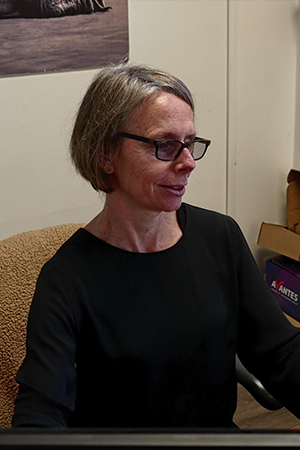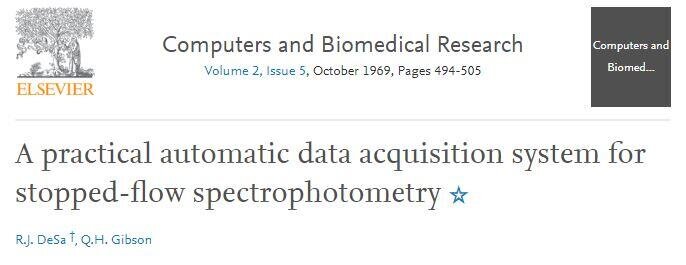The Definitive Guide to Circular Dichroism
The Definitive Guide to Circular Dichroism
Blog Article
Fascination About Circularly Polarized Luminescence
Table of ContentsGet This Report on Circular DichroismA Biased View of SpectrophotometersGetting The Circular Dichroism To WorkCircularly Polarized Luminescence Can Be Fun For AnyoneAll About Circular DichroismSome Known Incorrect Statements About Circularly Polarized Luminescence The Basic Principles Of Uv/vis The 8-Minute Rule for SpectrophotometersNot known Incorrect Statements About Uv/vis/nir All about Uv/vis/nirThe Ultimate Guide To Uv/visHow Uv/vis can Save You Time, Stress, and Money.The smart Trick of Uv/vis/nir That Nobody is Talking About
It is then scanned through the sample and the recommendation services. Fractions of the incident wavelengths are transferred through, or shown from, the sample and the recommendation. The resultant light strikes the photodetector device, which compares the relative strength of the 2 beams. Electronic circuits transform the relative currents into direct transmission percentages and/or absorbance/concentration worths.The transmission of a recommendation compound is set as a standard (information) value, so the transmission of all other substances are recorded relative to the initial "zeroed" substance. The spectrophotometer then transforms the transmission ratio into 'absorbency', the concentration of particular elements of the test sample relative to the initial substance.
Because samples in these applications are not readily offered in big quantities, they are specifically fit to being examined in this non-destructive strategy. In addition, precious sample can be saved by making use of a micro-volume platform where as little as 1u, L of sample is needed for total analyses. A brief explanation of the procedure of spectrophotometry includes comparing the absorbency of a blank sample that does not contain a colored substance to a sample which contains a colored substance.
More About Uv/vis/nir
In biochemical experiments, a chemical and/or physical residential or commercial property is picked and the treatment that is used specifies to that home in order to derive more info about the sample, such as the quantity, purity, enzyme activity, etc. Spectrophotometry can be utilized for a variety of strategies such as identifying optimum wavelength absorbance of samples, identifying ideal p, H for absorbance of samples, figuring out concentrations of unknown samples, and identifying the p, Ka of various samples.: 21119 Spectrophotometry is likewise a useful procedure for protein filtration and can also be used as a method to develop optical assays of a compound.
It is possible to know the concentrations of a 2 element mix utilizing the absorption spectra of the standard services of each part. To do this, it is necessary to know the extinction coefficient of this mix at 2 wave lengths and the termination coefficients of services which contain the known weights of the 2 parts.

Little Known Facts About Circularly Polarized Luminescence.
A lot of spectrophotometers are utilized in the UV and visible areas of the spectrum, and some of these instruments likewise operate into the near-infrared Area. The concentration of a protein can be estimated by measuring the OD at 280 nm due to the existence of tryptophan, tyrosine and phenylalanine (https://www.pearltrees.com/olisclarity1#item574664694).
Nucleic acid contamination can likewise interfere. This technique needs a spectrophotometer efficient in determining in the UV area with quartz cuvettes.: 135 Ultraviolet-visible (UV-vis) spectroscopy involves energy levels that thrill electronic shifts. Absorption of UV-vis light thrills molecules that are in ground-states to their excited-states. Visible area 400700 nm spectrophotometry is utilized extensively in colorimetry science.
These curves can be utilized to test a new batch of colorant to examine if it makes a match to specs, e
Traditional visible conventional spectrophotometers can not detect if discover colorant or the base material has fluorescence. This can make it tough to manage color issues if for example one or more of the printing inks is fluorescent. There are two major setups for visual spectrum spectrophotometers, d/8 (spherical) and 0/45.
Researchers utilize this instrument to determine the amount of compounds in a sample. If the compound is more concentrated more light will be taken in by the sample; within little varieties, the Beer, Lambert law holds and the absorbance in between samples vary with concentration linearly. In the case of printing measurements 2 alternative settings are frequently used- without/with uv filter to control better the effect of uv brighteners within the paper stock.
Rumored Buzz on Circular Dichroism
Some applications require small volume measurements which can be carried out with micro-volume platforms. As explained in the applications area, spectrophotometry can be utilized in both qualitative and quantitative analysis of DNA, RNA, and proteins. Qualitative analysis can be used and spectrophotometers are used to tape spectra of substances by scanning broad wavelength areas to identify the absorbance homes (the intensity of the color) of the substance at each wavelength.

The Best Strategy To Use For Circularly Polarized Luminescence
One major element is the kind of photosensors that are offered for various spectral areas, but infrared measurement is also challenging since practically whatever produces IR as thermal radiation, specifically at wavelengths beyond about 5 m. Another complication is that several products such as glass and plastic soak up infrared, making it incompatible as an optical medium.
2013. p. 13. Allen, DW; Cooksey, C; Tsai, BK (Nov 13, 2009). "Spectrophotometry". Obtained Dec 23, 2018. Ninfa AJ, Ballou DP, Benore M (2010 ). Basic Lab Approaches for Biochemistry and Biotechnology (2nd ed.). Hoboken: Wiley & Sons. ISBN 9780470087664. OCLC 488246403. Schwedt G (1997 ). The necessary guide to analytical chemistry.
Oke, J. B.; Gunn, J. E.
The Best Guide To Uv/vis/nir

1021/ac50048a728. ISSN0003-2700. Ninfa AJ, Ballou DP, Benore M (2015 ). Fundamental Laboratory Approaches for Biochemistry and Biotechnology (3, rev. ed.). Hoboken, NJ: Wiley & Sons. p. 77. ISBN9780470924525. OCLC915641828. "Completely Automatic Double Beam - Atomic Absorption Spectrophotometer (AA 8000)". Laboratory Devices. Labindia Analytical Instruments Pvt. Ltd. "Spectrophotometry Applications and Principles".
Fascination About Circular Dichroism
Obtained Jul 4, 2018. Trumbo, Toni A.; Schultz, Emeric; Borland, Michael G.; Pugh, Michael Eugene (April 27, 2013). "Applied Spectrophotometry: Analysis of a Biochemical Mixture". Biochemistry and Molecular Biology Education. 41 (4 ): 24250. doi:10. 1002/bmb. 20694. PMID 23625877. (PDF). www. mt.com. Mettler-Toledo AG, Analytical. 2016. Recovered Dec 23, 2018. Cortez, C.; Szepaniuk, A.; Gomes da Silva, L.
"Checking Out Proteins Filtration Techniques Animations as Tools for the Biochemistry Mentor". Journal of Biochemistry Education. 8 (2 ): 12. doi:. Garrett RH, Grisham CM (2013 ). Biochemistry. Belmont, CA: Cengage. p. 106. ISBN 978-1133106296. OCLC 801650341. Holiday, Ensor Roslyn (May 27, 1936). "Spectrophotometry of proteins". Biochemical Journal. 30 (10 ): 17951803. doi:10. 1042/bj0301795.
PMID 16746224. Hermannsson, Ptur G.; Vannahme, Christoph; Smith, Cameron L. C.; Srensen, Kristian T.; Kristensen, Anders (2015 ). "Refractive index dispersion picking up utilizing a range of photonic crystal resonant reflectors". Applied Physics Letters. 107 (6 ): 061101. Bibcode:2015 Ap, Ph, L. 107f1101H. doi:10. 1063/1. 4928548. S2CID 62897708. Mavrodineanu R, Schultz JI, Menis O, eds.
The Main Principles Of Spectrophotometers
U.S. Department of Commerce National Bureau of Standards special publication; 378. Washington, D.C.: U.S. National Bureau of Standards.
The process starts with a regulated light source that illuminates the evaluated sample. In the case of reflection, as this light engages with the sample, some is soaked up or given off. The released light journeys to the detector, which is analyzed, quantified, and presented as industry-standard color scales and indices.
Industry governing bodies typically define specific metrics for particular items, such as Tomato and Coffee indices. The simplified mathematics looks like this: Where R is the reflection coefficient. All terms are examined over the visible spectrum from 400 to 700 nm. When it comes to transmission, when the light interacts with the sample, it is either soaked up, shown, or transmitted.
The smart Trick of Uv/vis That Nobody is Talking About
Examples include APHA (American Public Health Association) for watercolor and purity analysis, ASTM D1500 for petrochemical color analysis, edible oil indices used in food, and color analyses of drinks. The streamlined mathematics looks like this:. Where T is the transmission coefficient. All terms are evaluated over the noticeable spectrum from 400 to 700 nm.
Image Credit: Matej Kastelic/ Dr. Arnold J. Beckman and his colleagues at the National Technologies Laboratories initially developed the spectrophotometer in 1940. In 1935 Beckman founded the company, and the discovery of the spectrophotometer was their most ground-breaking development.
A Biased View of Uv/vis/nir
Over time, researchers kept improving the spectrophotometer style to enhance its efficiency. The UV capabilities of the design B spectrophotometer were improved by replacing the glass prism with a quartz prism.
Usually, a spectrophotometer is made up of 2 instruments, particularly, a spectrometer and a photometer. A fundamental spectrophotometer includes a light source, a monochromator, a collimator for straight light beam transmission, a cuvette to position a sample, and a photoelectric detector.
What Does Uv/vis/nir Mean?
There are different kinds of spectrophotometers in various sizes and shapes, each with its own function or functionality. A spectrophotometer figures out just how much light is reflected by chemical elements. circular dichroism. It determines the distinction in light intensity based on Recommended Reading the overall quantity of light presented to a sample and the amount of light beam that travels through the sample solution
According to the instrument's style, the sample is placed between the spectrometer and the photometer. After the light is travelled through the sample, the photometer measures its intensity and shows the reading. A spectrophotometer is utilized to identify the concentration of both colorless and colored solutes in a solution. This instrument is utilized to determine the rate of a reaction.
Report this page